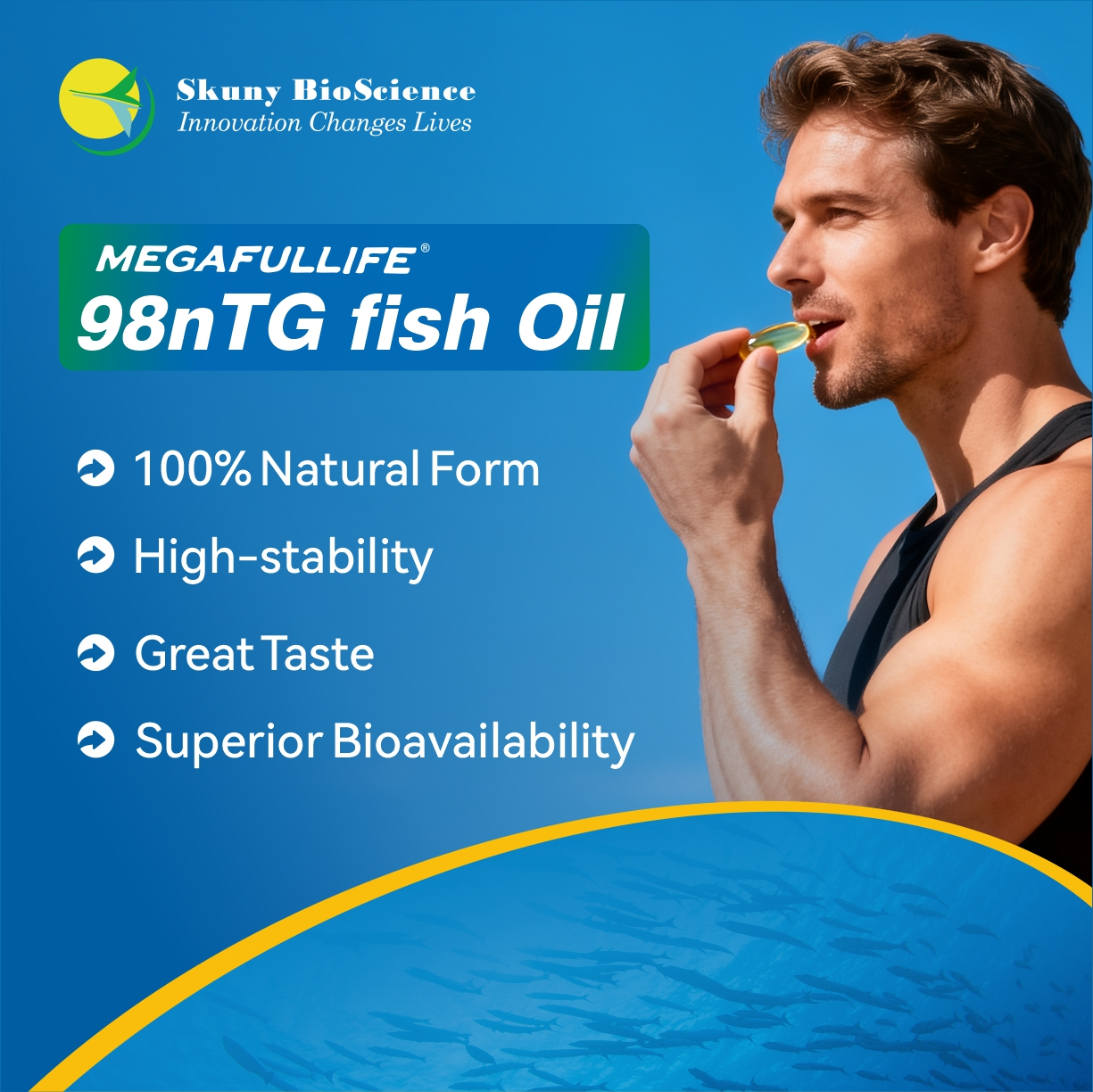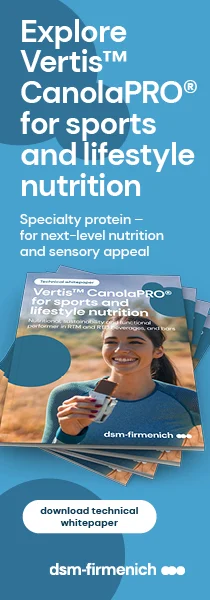ADM looks at the trends, ingredients and innovations shaping the exercise recovery space
26 Sep 2023 --- For consumers actively involved in organized sports or simply pursuing personal fitness goals such as working out in the gym, biking to work, or embarking on lengthy hikes, the process of muscle recovery stands as a crucial component of any physical activity. Moreover, Innova Market Insights’ data suggest that the sports nutrition sector is witnessing a growing trend in the availability of solutions aimed at facilitating this recovery process.
To better understand the muscle recovery market and the innovative ingredients shaping the space, Nutrition Insight sits down with Vaughn DuBow, the global director of marketing for microbiome solutions at ADM.
Can you provide an overview of ADM’s approach to post-workout recovery nutrition?
DuBow: At ADM, we’re continually examining new ways to support consumers in recovery following exercise, including investigating new microbial strains and how the microbiome can help support this space. Generally recognized as supporting digestion, probiotics are garnering more attention in the active nutrition arena, with rising consumer interest in how microbiome-supporting solutions can support wider aspects of their well-being.

Backed by clinical research, we have brought together three of our probiotic strains – ES1 (Bifidobacterium longum CECT7347), BPL4 (Lactobacillus casei CECT9104) and BPL15 (Lactobacillus rhamnosus CECT8361) – for a new Active Lifestyle Blend, which has been shown to support biomarkers related to post-exercise oxidative stress. This research demonstrates the blend’s potential to support aspects of recovery following exercise.
Protein continues to be highly sought-after in post-workout recovery products. Consumers are increasingly interested in a wider range of protein sources, with many turning to alternative and plant-based protein options. Soy and pea are stand-out protein sources for the active nutrition space, for both protein diversity and content.
Soy is one of the few non-animal proteins that is a “complete protein” with a Protein Digestibility Corrected Amino Acid Score of 1. On top of that, amino acids are of particular demand in the active nutrition arena, as they’re perceived by consumers to support muscle development and repair following exercise.
Plant protein sources like soy can provide branched-chain amino acids, including l-leucine, which is a key influencer in muscle recovery and growth through the mTOR pathway.
Can you tell us about some of the trends you are seeing in the muscle recovery category?
DuBow: Hydration is also trending, as many active nutrition consumers seek products with isotonic properties, electrolytes and a variety of vitamins and minerals. Performance beverages with electrolytes are in high demand, while energy drinks and pre-workout offerings with beta-alanine and l-carnitine are captivating consumers for their perceived associations with endurance, muscle building and cognitive function.
Tapping into our wide array of solutions and formulation expertise, we have developed specific concepts to help brands deliver on trending areas of focus for active nutrition consumers, including rapid rehydration.
For example, our “ProIsotonic” beverage concept has key vitamins and minerals, while also tasting great and providing ease of processing for manufacturers in a powdered format. Our ready-to-drink “CoolFit” and “Fruitivity” beverage concepts also demonstrate isotonic capabilities and vitamins and minerals, along with refreshing flavor.
We anticipate a surge in rapid hydration beverages, as more consumers seek out solutions that assist them in replenishing electrolytes, fluids and energy following a period of physical activity. In fact, market research projects substantial growth for US sports hydration and sports energy beverage sales. Our research shows that hydration is trending for young adults, with product labels that reference electrolytes being the most sought-out claim by younger consumers.
Can you provide insights into how ADM’s ingredients support the taste and texture of post-workout recovery products?
DuBow: We leverage our full ingredient portfolio, including our flavors and colors derived from natural sources, as well as our taste modulation technologies, alongside our microbiome-supporting solutions, proteins, vitamins, minerals and botanicals, to support the development of next-generation active and sports nutrition solutions that are accessible, support wellness goals and meet consumers sensory expectations.
Notably, as protein solutions are the most purchased and widely used exercise recovery supplement, it is crucial to build an enjoyable sensory experience in these protein-packed products, helping encourage repeat purchases. Not only do our soy and pea protein solutions provide high protein concentration, but they also have exceptional functionality to support tasty active nutrition offerings.
Our neutral-tasting soy protein isolate ingredients offer at least 90% protein concentration, while also delivering on functionality and mouthfeel consistency. Plus, our pea proteins provide quality nutrition, as well as market-leading clean taste, light color and high functionality. Specifically, our award-winning ProFam Pea 580 has an extremely clean taste with overall low total aromatics (including beany, earthy and bitter notes).
Additionally, through concepts like our “Plant-Based Protein Shake 75+,” we showcase how combining soy and pea proteins together can elevate the overall experience – from high protein content to a smooth mouthfeel. The concept includes our soy and pea proteins alongside a selection of on-trend, dessert-type flavor profiles like vanilla, choco-peanut, cookie dough and waffle.
Also, our library of high-quality botanical extracts, standardized plant extracts, fruit and vegetable content powders can also assist manufacturers in taste elements and function. For example, immune function support is among the top five areas active nutrition consumers in North America and EMEA would like to support over the next 12 months.
Bold and invigorating flavors like acerola and camu-camu are of interest due to their perceived connection to antioxidants and vitamin C, which many consumers associate with immune function support. Additionally, earthy and sometimes sweet red beet is high in natural nitrates and trending for its perceived exercise recovery support.
How can ADM's innovations and offerings improve the flavor of muscle recovery applications?
DuBow: By utilizing our proprietary technologies in taste modulation, we are able to craft better flavor experiences for active nutrition foods and beverages. TasteSpark flavor technology enables the development of delicious, better-for-you reduced-sugar products by providing functions such as taste modulation to help mask off-notes or bitterness, or increase mouthfeel in such products for a richer tasting or more indulgent experience.
With post-workout recovery beverages, most consumers are looking to add protein without adding sugar, which can be challenging for product developers to create great-tasting products. When using alternative sweetening systems, TasteSpark for Sugar Reduction can help fill in sensory gaps left by the full sugar experience. Bitter or metallic notes from vitamins, minerals, or other functional ingredients can be minimized through TasteSpark Masking.
While ADM’s plant protein solutions are clean-tasting, TasteSpark Masking can also mitigate green and beany off-notes that may come from some protein sources. With vanilla as a main flavor type for recovery products, TasteSpark Mouthfeel can add a mouth-coating richness to complement the vanilla and potentially increase vanilla bean notes of the flavor profile.
By William Bradford Nichols















